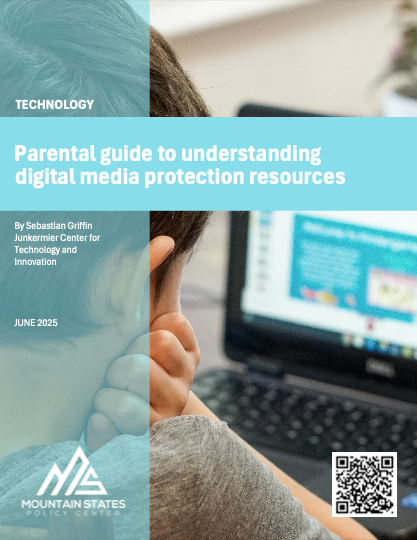What social media safety tools are available for parents?
- Sebastian Griffin

- Jun 27
- 4 min read

Through social media, online platforms, and ever-present digital devices, parents today are up against a tidal wave of risks that can harm their children. There are so many dangers in the technology world, including cyberbullying, “harmful materials,” as well as the known addictive nature of social media.
Make no mistake, online apps can be amazing tools, resources, and opportunities for every generation to pioneer the next technological advancement, but dangers are around every terabyte of data. Empowering parents with the right tools and resources to navigate this complex environment is key to garnering the benefits while mitigating the risks.
Digital parenting tools matter more than just monitoring and tracking your child’s internet use, which can be difficult even under the best circumstances, especially when you take into account multiple children and multiple accounts. There can also be a technological learning curve of teaching and equipping parents to make decisions that maintain their family's beliefs and safety standards.
Every type of device raises different safety concerns and needs specific measures. State mandates are coming in fast and furious, and state social media regulations are accumulating to address real concerns associated with social media use.
For example, age verification laws have had a tricky time passing constitutional muster and have been blocked by the courts in California, Utah, Arkansas, Ohio, and Mississippi. While there is a need to protect children online, there is also an important balance to ensure we do not weaken constitutional rights. There are legitimate questions as to whether it is the government’s job to police the internet or social media.
In Arkansas, U.S. District Court Judge Timothy Brooks found the proposed law was an unacceptable affront to free speech, saying that the “loss of First Amendment freedoms, even for minimal periods of time, constitute[s] irreparable injury," and that there was “no compelling evidence” that children would be protected by the legislation.
A judge in California took the state to task for claiming their speech regulation bill would somehow improve children’s privacy. Judge Beth Labson Freeman said that age verification mandates are “likely to exacerbate the problem by inducing…children to divulge additional personal information.” Every time these bills have been challenged, they have failed to withstand even basic constitutional scrutiny.
Alternatively, a market-based approach that rewards competition and relies on consumer responses could be the right solution. Not only does this make the development of digital parenting solutions more efficient, but it also helps to keep them relevant and user-friendly.
It is important to note that the social media tools available to parents are endless. Our new study (Parental guide to understanding digital media protection resources) examines these different options for parents. Various tools will cater to a range of needs, from location tracking to content management, providing parents with the resources necessary to foster a safe and balanced digital space for their children.
The choice of tool often depends on specific family needs, whether it's detailed insight into online behavior, extensive content filtering, or simple time management. By combining each of the strengths of these applications, parents can tailor a digital parenting strategy that is both effective and economical, ensuring their children's experiences are positive and protected.
Innovation drives the tech market, and developers are continually fighting for consumer attention and market share. The market approach incentivizes “parental control tool developers” to find increasingly innovative and effective ways to differentiate their products as competition continues to mount. This creates a cycle of regular updates that not only improve existing features but also add new ones to handle future digital risks and parental worries.
When new forms of online communication develop, those developers could build in ways to monitor them, ensuring that parents have the tools they need to safeguard their children against new threats, such as cyberbullying, on the next round of social media platforms. The rapid change of technology requires equally quick responses, something a market-driven approach is uniquely capable of delivering and can never come from government overseers.
If we know anything from family experiences, a single solution does not work across the board for the different needs and values of each family member. The market-based approach offers a range of tools that suit different parenting styles and worries. Depending on what parents want, they can find the tools that best fit those needs, ranging from the least, to the most intrusive monitoring tools, or something that stands more towards teaching digital literacy.
For example, some families may want something with more location tracking and geofencing features, while others may want better web filtering. If you look at the market, there are specific apps that focus on one aspect of control, or you can get suites that provide a wider selection of applications.
Competition can help make parental control tools more affordable and accessible to a wider variety of families. The availability of free versions and starter plans permits some degree of parental control without necessarily spending money, so that families can get basic features and upgrade them, as needs and income change. This tiered approach creates the best route for parents in making their access much easier for their families, as well as creating pressure on companies as the average price point and clear value proposition per family.
There is no silver bullet when it comes to completely securing a child's digital experience; a combination of market-driven solutions and engaged parenting is key to managing the challenges posed by the digital world. Ultimately, creating an environment of trust and open dialogue about digital use is crucial for helping children navigate online spaces safely and responsibly.
As digital technologies continue to evolve, we must also evolve our strategies for managing and protecting our children's online engagement with these tools.








Comments